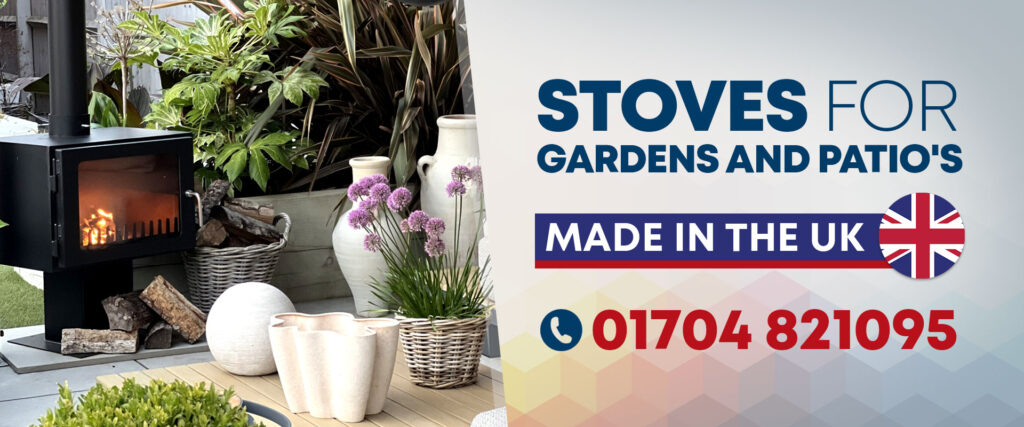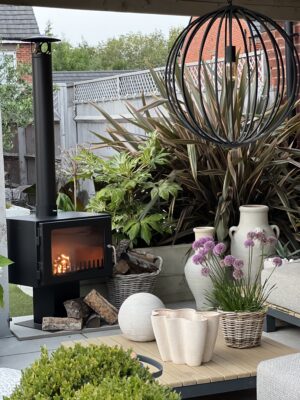[heading]How to install a wood stove[/heading]
The installation of a contemporary wood burning stove is a relatively simple process providing some simple principles are followed. The installation of any stove should be taken seriously and a carbon monoxide detector always installed in the room were the stove is situated.
Here is a comprehensive list of the items you will need
If you have a chimney you will require:
- A Wood stove or multifuel stove
- A connecting Flue (Colour matched)
- A register plate
- A flue liner kit
- Fire Cement or High Temperature Silicone
- Carbon Monoxide Detector
[heading]Considerations on how to install a wood burning stove[/heading]
Contemporary wood burners and wood stoves rely on the pressure variation in the chimney or flue to create a natural draught that forces air through the air-wash system and allows the fuel to burn inside the appliance.
Air rises inside the chimney naturally as it is lighter than the air in the surrounding environment, similar to the way a hot air balloon rises into the atmosphere. In order for this process to work correctly the junction between the contemporary stove and the flue or chimney needs to be gas tight and free of leaks were the chimney could suck in colder air and dilute the temperature inside the chimney.
Most commonly, poor performance in a modern wood stove is caused by the failure of the installation to be gas tight or by failure to understand the affect of other environmental issues that can cause interruption or loss of the natural convection taking place inside the chimney system.
It is critical that the flue system is performing correctly on a contemporary wood burner as often they contain a large glass window, providing a better flame picture. If the air wash system isn’t functioning correctly then the glass will become blackened with tar and deposits.
There are also many environmental issues that should be considered prior to installation.
Downdraught caused by a pressure zone in the area if the exiting flue is a common problem when installing a contemporary woodburner, Especially when using a prefabricated twin wall flue system. Often the exit point of the terminal on the roof will be at a point below the ridge of the roof or overlooked by adjoining buildings or trees, or the new terminal is lower than any existing chimneys.
Downdraught problems can be easily overcome by correct planning and siting of the chimney terminal but a balance between functionality length at which a chimney can be extended before looking out of place. Were the Hight of a flue or chimney is restricted then the only option is to install a chimney fan. There are many anti-Downdraught cowls and products on the Market but very few can truly address the problem at cause.
Conservatories pose the most demanding situation for the installation of a contemporary wood burner usually because the house overlooks the wood burner exit terminal and causes a back up of prevailing wind that in worst cases can cause the chimney to work in reverse. Signs of down draught in these cases can be as drastic as filling a room with smoke to small occasional puffs of smoke being emitted from air vents. Downdraught and poor heat output is more common in heavily baffled stoves. The vesta v4 stove is ideally suited for conservatories as it is not heavily baffled.
Installing a closure or register plate
It is essential that a proper fitting closure or register plate is used when installing a stove. This is the most important component and ensures that all the air that is being sucked into the chimney is coming directly through the stove control vents. This ensure that the stove is running at its optimum pressure and that the airwash system can keep the glass clean at all times.
Register plates are made from 2mm steel and painted to suit your flue pipe. They are available in three sizes here
Calculating your requirements
The size of stove required for a building is an important part of the process. Often contemporary wood burners are installed in larger open spaces and consideration should be taken on the total heating requirements. If your unsure about the exact requirement we can advise you accordingly so feel free to call us in 01704 821095.
You can use our kW calculator below to give you an idea of the size you will need:
Siting your contemporary woodburner
The location of you stove will most likely be in an existing chimney breast but as more houses are built without a class 1 chimney then your stove may be located either in the centre of the house with a pre-fabricated flue passing through the roof or on an outside wall with the pre-fabricated flue passing through the outside wall and climbing the building to exit above the gutter. Locating the fire in the centre of the house gives the benefit of extra heating from the flue but perhaps is a little more involved in the installation.
We are able to supply you you with a full range of flue systems colour matched to coordinate your stove or simply blend in with outside fixtures such as downpours etc.
It is important to consult the installation instructions carefully and ensure that the required clearances are built into the planned positioning. All vesta contemporary wood stoves are designed to connect both from the top flue position to be interchanged to rear flue were required.
All vesta stoves allow for the chimney to be routinely cleaned by direct access through the stove door. This means unsightly access doors are eliminated and the clean lines of the wood stove is continued through the flue system.
Hearths
Vesta contemporary stoves should be situated on a non combustible hearth. We recommend granite or tiled hearths although many people opt for glass or a steel plate as an alternative. A full constructional hearth is not usually required were a stove shows that the heat underneath the appliance is less than 100 degrees. Care should be taken to ensure the floor can take the required loads prior to installation usually stove can weigh up to 150kg.
Surrounding Walls
The distance from vesta log burners to combustible materials should be 500mm. On adjacent walls fire plaster should be used to avoid cracking. Shielding can be used to protect surfaces from the appliance although it is best to speak to our technical office regarding the exact shielding for a given situation.
Plasma TV above wood burners
If you are looking to site a plasma TV above your contemporary stove then design is very important. We have a vast amount of experience in design of systems capable of this type of installation and can advise you accordingly. We have installed many woodburning stoves underneath plasma TV’s and providing the correct heat shielding and planning is used then this is perfectly safe and feasible.
Air bricks
Wood burners above 5kw in output require additional air supply by way of an air brick that is permanently open. We have a range of woodburners that DO NOT REQUIRE an airbrick they can be found here
Please see our installation instructions to see the exact size requirement of the airbrick for each contemporary wood burning stove
Do I need a hetas engineer?
The installation of a contemporary wood-burning stove is a controlled service under doc j of the building regulations. It is very simple to install the appliance your self providing you have a basic understanding of general building work.
The important point is that you must file a building notice with you local building control department. This is a simple process but normally carries a small charge.
Vesta engineers are available to offer advice in all aspects of the installation so please feel free to contact us.

